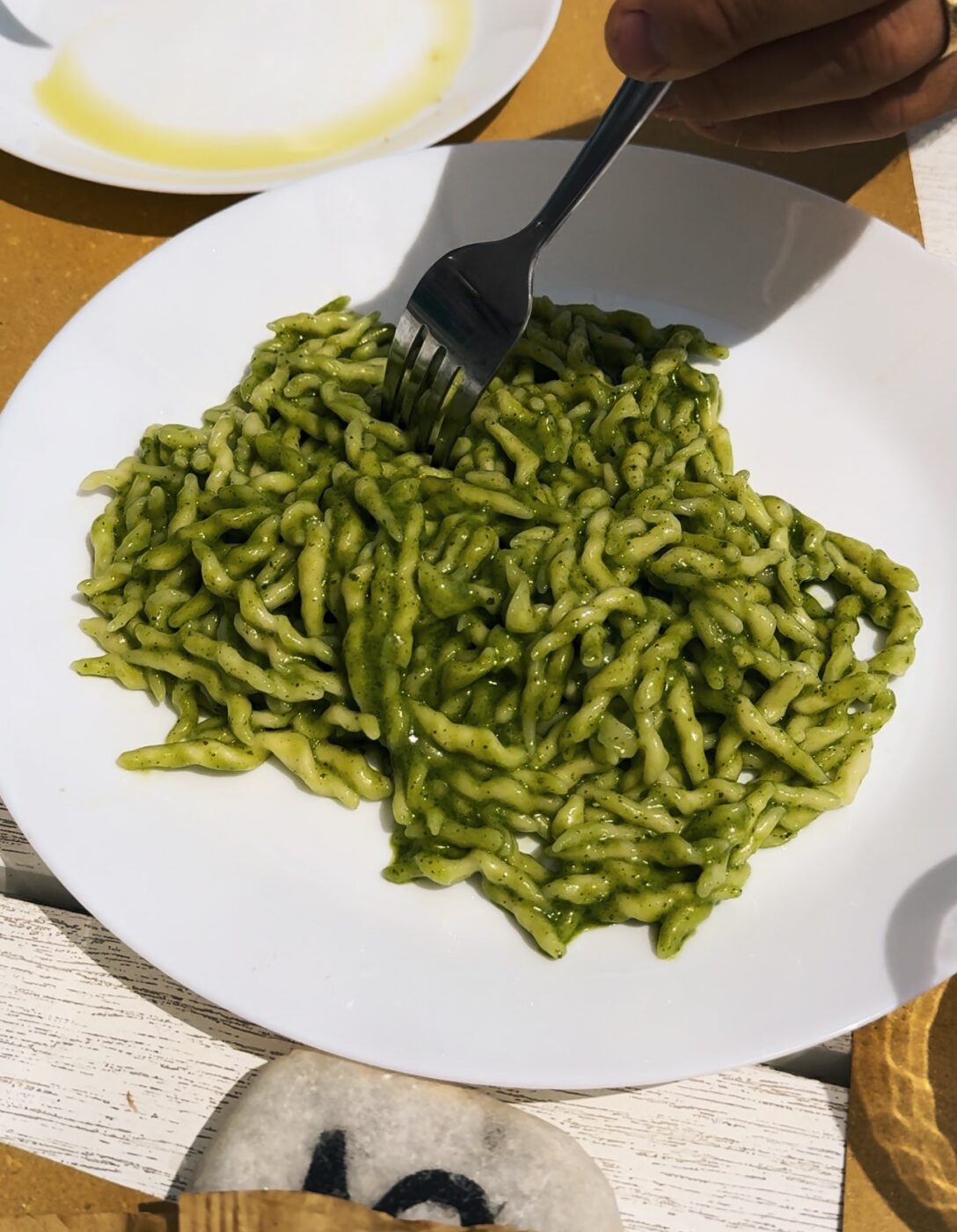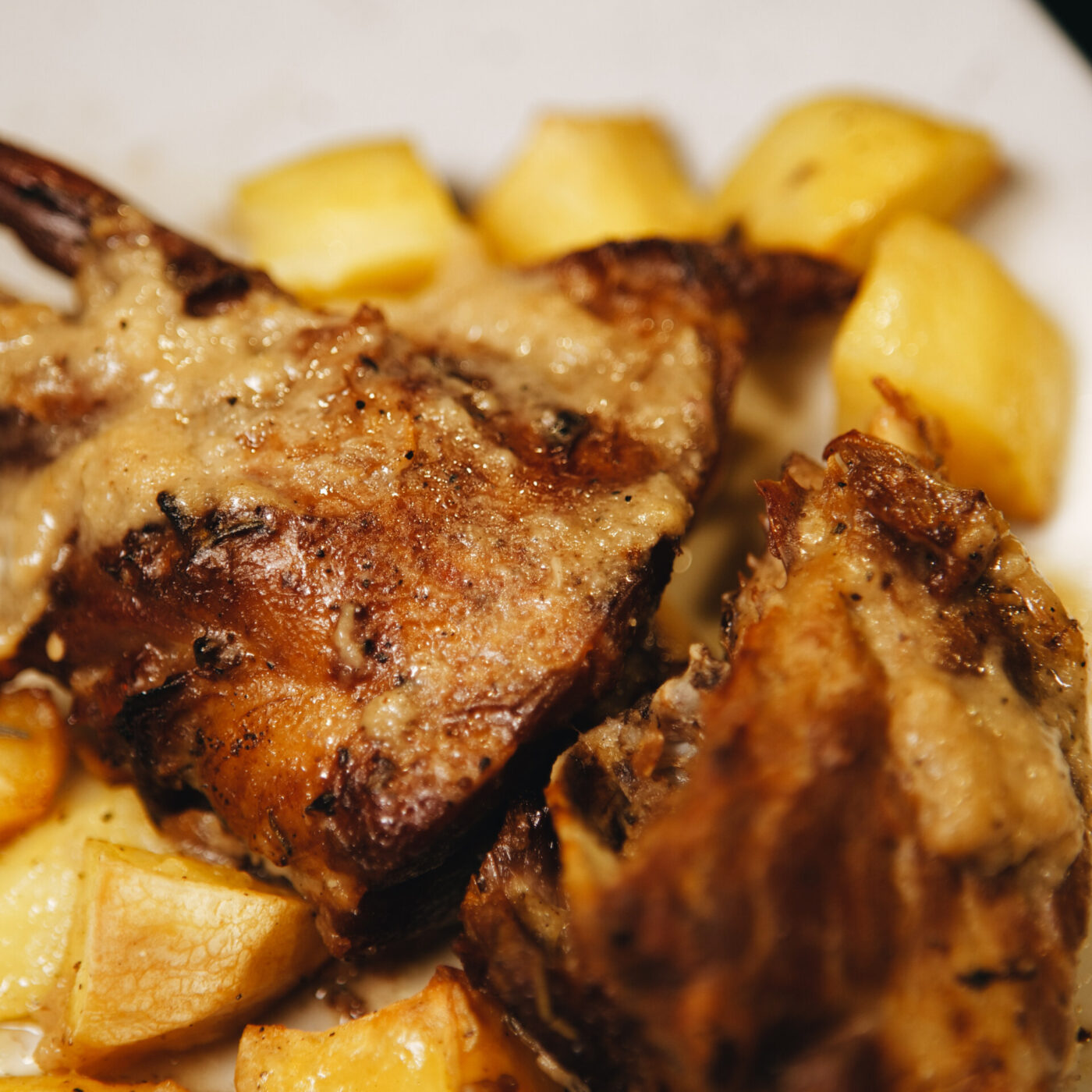Nobody I know of has ever died from eating Italian food. Except perhaps, Fabio’s zio’s brother’s wife’s best friend’s son, Vincenzo, who was a little too generous with the “Viagra-grade” peperoncino one Sunday lunch and got rushed to the emergency room with all the symptoms of a fatal heart attack. I never did hear if he made it through or not. Poverino.
“Death by Italian Food,” what a way to kick the bucket! I don’t mean in the physical sense (no gross overconsumption, food poisoning, or anything too literally grotesque), but in regards to the strangely sinister names and stories surrounding several of your favorite Italian dishes. Indeed, you can theoretically whip up a blockbuster menu entirely inspired by pain, suffering, and, ultimately, death. That means a lineup of dishes for primi, secondi, and dolci that reflect a macabre collective of “-ations” including (but probably not limited to) strangulation, assassination, and fire inhalation (leading to burnt appendages, but more on that later).
The irony is, you’ve probably already devoured most of these dishes on the menu at your local osteria, without thinking twice about why strozzapreti is called strozzapreti. For some, this might be the ultimate Halloween menu. For others, it’s just a regular daily ritual: a gutsy plate of “killer spaghetti,” a few “bones of the dead,” and a delicious “drowning” to end it all. None of us are going to live forever anyway so… Buon appetito!
PRIMI
Spaghetti all’assassina (Killer spaghetti)
Every time I order spaghetti all’assassina I can’t help but entertain visions of myself as a character in a racey murder mystery–Alessia La Assassina, or something like her. This alter ego wears a flaming red leather bodysuit, a black cape, and has a bouffant hairstyle like a mound of charred spaghetti. This dish is killer; spaghetti cooked directly in the pan via a chili-infused tomato broth that evaporates and eventually leaves the pasta crunchy and burnt underneath. Its burnt base gives your knife and fork hell, the cloying oil wraps around your tongue like an adultress’s kiss, and the “killer”, per se, the pepperoncino, does exactly what it’s supposed to do with eye-watering forza (especially if you’re generous with quantities like Fabio’s zio’s brother’s wife’s best friend’s son, Vincenzo).
The origins of this pasta dish are somewhat obscure, but many point to Bari’s Al Sorso Preferito, where they claim it came about by pure mistake–and that there was no broth reduction method in the original recipe as it’s most commonly documented and prepared today. The spaghetti was, in fact, blanched lightly first, and then added to the pan with the concentrated tomato sugo to infuse all together. It might be that, in the 1950s and ‘60s, when more tourists started to explore Puglia, using Bari as the main gateway, the local trattoria and its contemporaries searched for a way to offer a thrilling (killing) twist on traditional pasta dishes that couldn’t be eaten anywhere else in Italy. It might also be that someone was too lazy to boil the pasta all the way and just whacked everything into a frypan on a high flame. At the very least, a plate of spaghetti all’assassina will likely kill your senses (and your inhibitions) with its spice–not one for the faint-hearted.
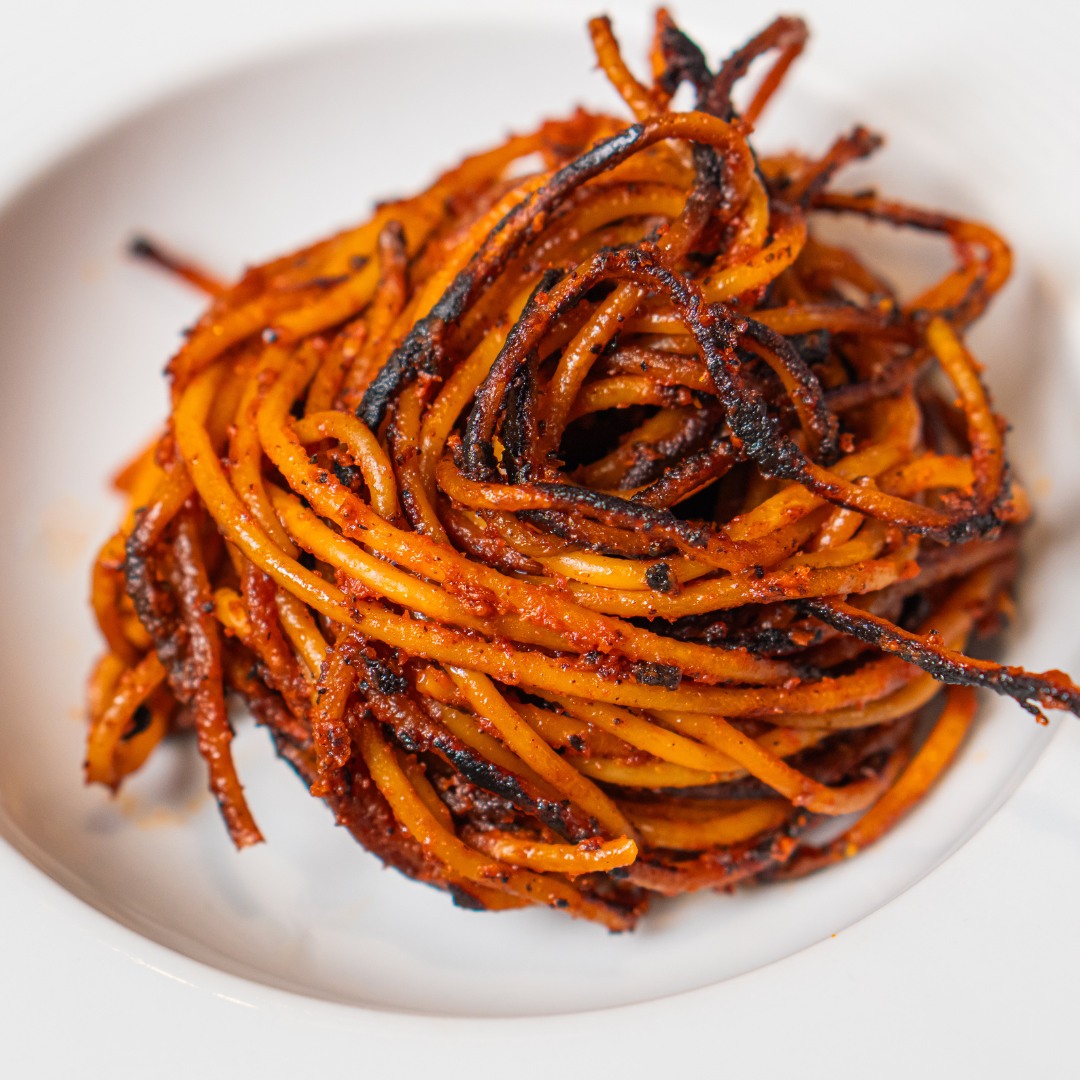
Spaghetti all'assassina; Courtesy of @Urban.AssassineriaUrbana
Strozzapreti (Priest chokers)
Nobody condones violence against the clergy under any circumstances. So when I found what the word strozzapreti means, I had to ask some serious questions. Originating from Emilia-Romagna, this variant of cavatelli looks like twisted cords that are hand-rolled to varying lengths, and their name–wait for it–translates to “priest chokers” or “priest stranglers.”
In a flurry, I went straight to the old Roman sonnet books (as you do), skimming through scathing satirical and anti-theocratic works by 19th-century poet Giuseppe Gioachino Belli, who wrote through the eyes of the “common people.” Food takes center stage in Belli’s satirical portrayals and anti-clerical sentiments. He evokes scenes of gluttonous priests and the prevailing custom of making (and devouring) a type of pasta the peasants referred to as strozzapreti. It’s believed that clergy–known throughout history, art, and literature as having rather healthy appetites–would scoff the pasta so quickly that they almost choked on it.
Granted, they do slide down the throat quite nicely, the old strozz’, especially when coated in a classic pomodoro sugo that clings to the pasta’s little crevices. It wouldn’t take a freak accident to load up your mouth, accidentally laugh or sneeze, and then half-swallow and choke and die. It could happen to any of us. Some historical accounts suggest that many peasants in the 18th and 19th centuries resented the wealthy clergy for imposing harsh taxes on them; some housewives would prepare this pasta specifically for visiting priests, hoping they’d graciously accept a plate—then choke while eating it. Others say that the shape of the pasta itself, usually hand-twisted into an elongated or irregular shape, resembles a rope or a string. This physical resemblance perhaps likens it to a weapon that might be used to choke someone; in a game of Italian Cluedo, the ultimate murder suspect could well be: “Alessia, with the Strozzapreti, in the Cucina”.
*Have a glass of water here, please.
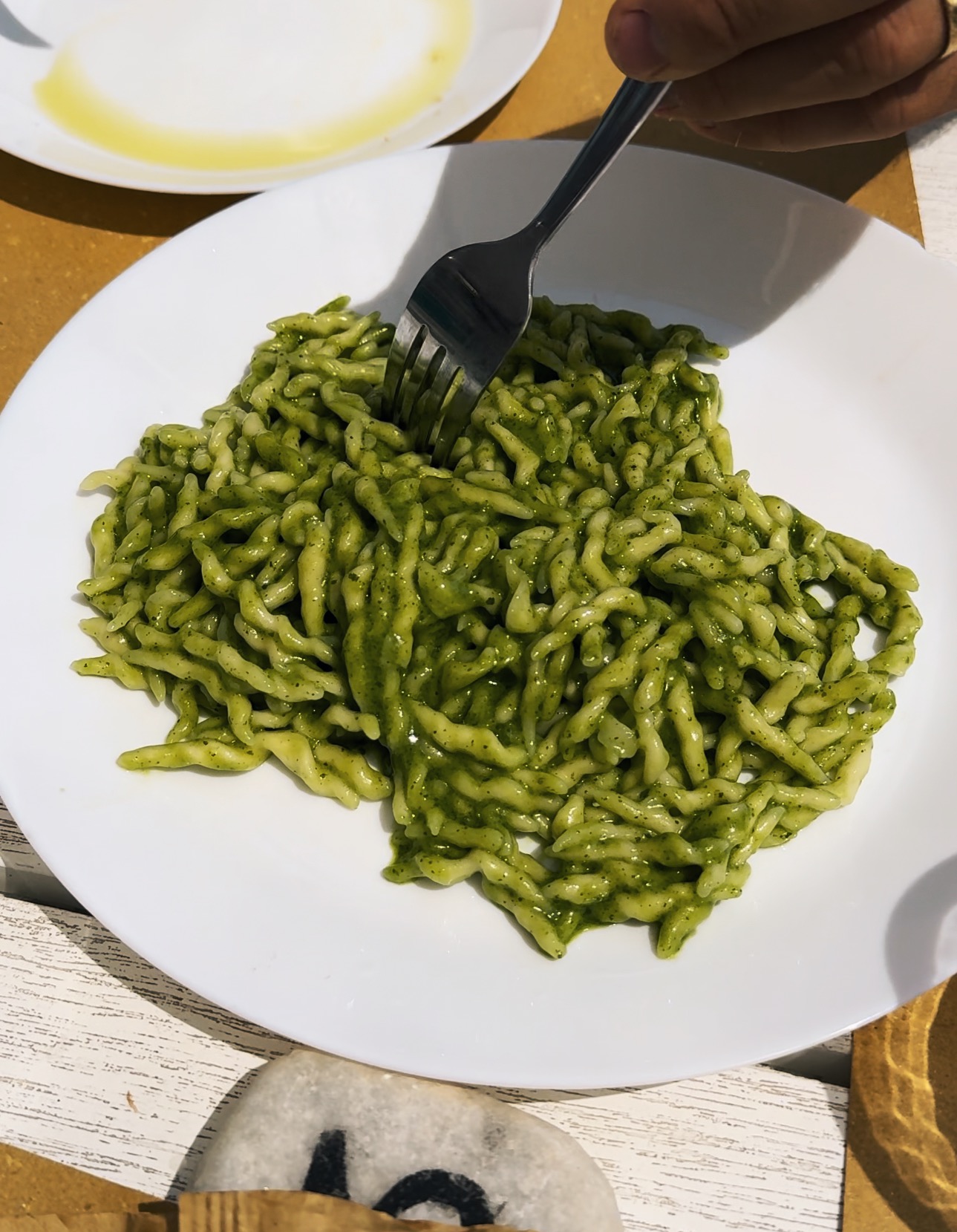
Strozzapreti al pesto
SECONDI
Abbacchio a Scottadito (Burnt finger lamb)
Honest question: would you risk losing a finger or two just because you can’t wait for the lamb to cool down before you eat it? According to tradition, yes, it’s a mandatory sacrifice. We’re onto secondi in our “Menu to Die For”, and cutlery has gone out the window. A traditional dish from Lazio, abbacchio a scottadito is lamb chops typically marinated simply in olive oil, rosemary, salt, and pepper–and grilled or fried in a flaming flash. The authentic serving suggestion is as follows: grab them straight off the grill with your bare hand and endure the excruciating pain of sizzling meat scorching your tender fingertips. Failure to do this, or even waiting just a few moments longer (or heaven forbid, attempting to eat them with a knife and fork) means the meat is already getting cold and you’ve missed the moment.
Sometimes even served piled high on a big platter at a party, few things bond you to someone on a corporal level quite like grabbing a scorching chop in unison and, together, enduring the burn of what might be one of the most hazardous “finger foods”. In any case, it has a sort of pagan conviviality about it, right? Some people walk on hot coals for enjoyment, and others eat abbacchio a scottadito.
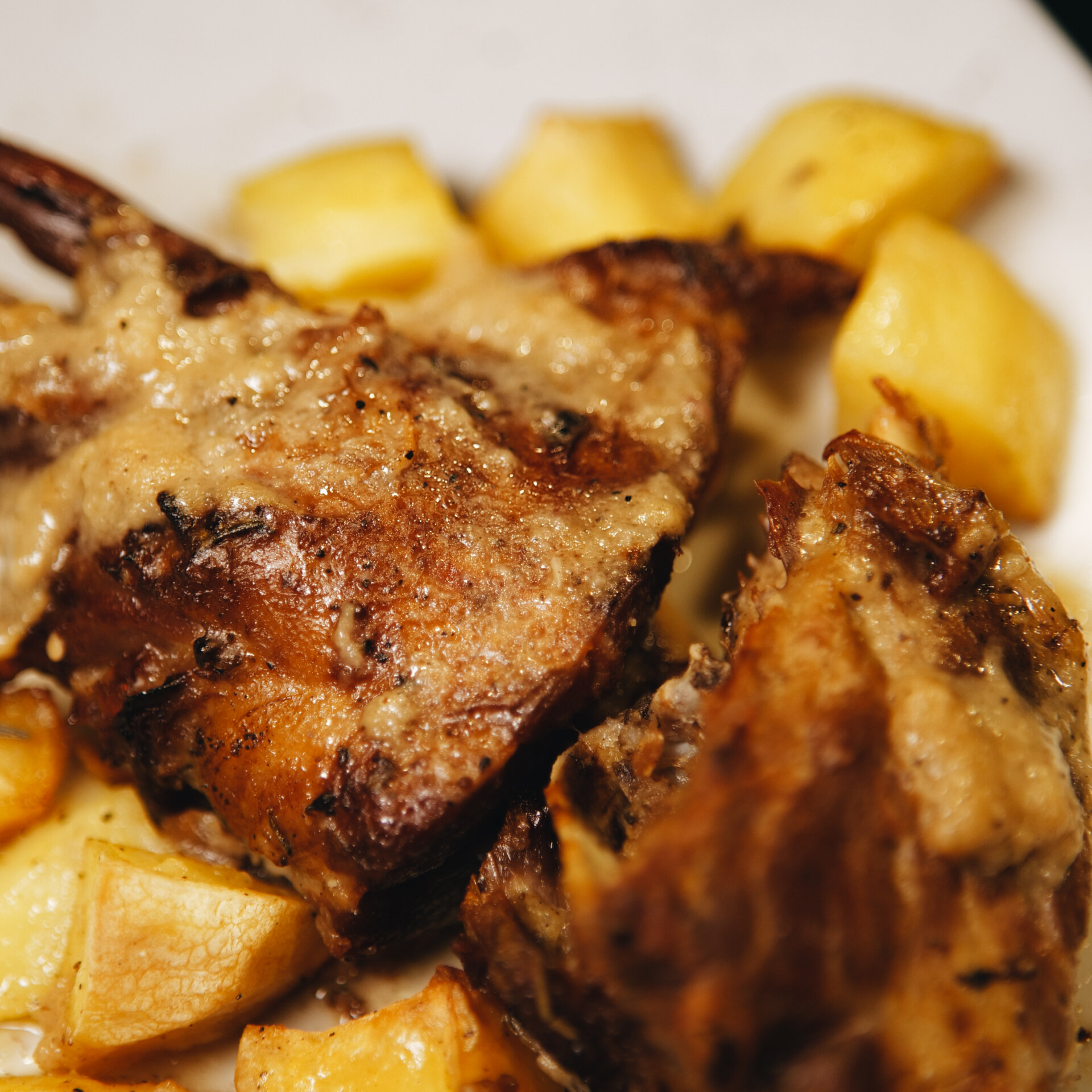
Abbacchio allo Scottadito; Courtesy of Taverna Cestia in Rome
Maiale Ubriaco (Drunk pork)
This little piggy went to the mercato, and this little piggy got simmered in a steam bath of wine and is now intoxicated beyond help. A generous serving of succulent maiale ubriaco might be one of the first dishes that comes to mind when people hear the words “comfort food”… tender pork shoulder, aromatic herbs, and enough wine to dry a cellar.
The Tuscan speciality has been made in some variation or another for centuries. The recipe induces a dangerously hypnotic kind of alco-alchimia (alcoholic alchemy), in which the wine works its magic on several levels. Firstly, it tenderizes the meat during a lengthy cooking process, and eventually evaporates, leaving behind a sweet, sticky, tangy flavor.
The preparation of this dish conjures images of Dante’s Inferno; the perfect recipe for ultimate sin: a long and adulterous soak in a pool of Sangiovese wine, bubbling away at blistering temperatures. What happens under the lid of a casserole dish stays under the lid. Or does it? Regardless, this main course shows that, when it comes to wine in Italian culinary culture, “everything in moderation, including moderation” is the preferred approach.
*Another glass of water here, please.
DOLCI
Ossa di Morto (Bones of the dead)
How do you know you’re dead? When someone bakes biscuits in the shape of your bones to commemorate your departure–that’s how. Throughout the regions, particularly in Sicily, you’ll see many variations of these small, dry biscotti made from a simple mix of ground almonds, sugar, egg white, and flour that look like freshly dug-up bones. Come early November, they’re traditionally made for All Saints Day (November 1st) and All Souls’ Day (November 2nd), which calls for a special batch of underlying bodily structures as a way to honor deceased loved ones.
I was always rather fond of them as a kid–something to sink your teeth into and give the jaw a good workout. I’d often request my mother bake them outside of death-day commemorations but she refused, saying it was bad luck to eat them at other times of year. Luckily, they’re so simple to make that I’ve become accustomed to baking a regular batch at home as a standby cupboard snack in my adulthood. They’re so easy you could make them on your deathbed. Don’t tell La Mamma, but I get a sort of deranged pleasure from filling a big glass jar of fresh-baked bones and keeping them in the dark depths of the cupboard for a sweet afternoon pick-me-up.
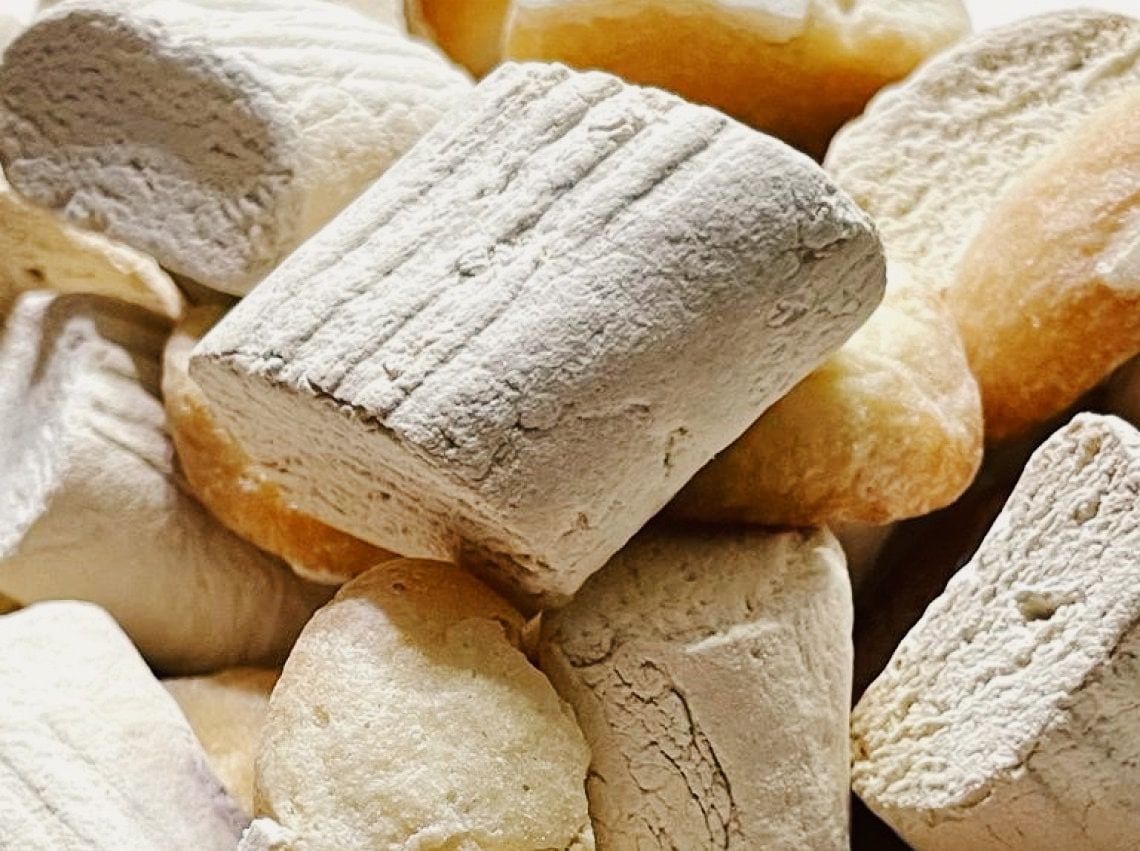
Biscotti Ossa di Morto
Sanguinaccio dolce (Sweet bleeding)
For the unsuspecting vampiri among us, a swirl of pig’s blood in the chocolate pudding will definitely get the after-party started. A local speciality across the southern Italian regions of Campania and Basilicata, sanguinaccio dolce is exactly what it means, and means exactly what it says. A chocolate pudding made with fresh pig’s blood, sugar, dark chocolate, milk, and cinnamon. Traditionally prepared during Carnevale or as part of a pre-Lenten feast, the dessert reflects historical peasant traditions when every part of a slaughtered pig was used (right down to the last drop), transforming “waste” into a key ingredient that added thickness and flavor to this beloved family dessert.
And even though your zio still tries to pull your leg by bringing a homemade budino al cioccolato to family lunch and swearing it contains “the real stuff”, you won’t find pig’s blood used in similar dishes these days because there’s such a thing as Health and Safety Regulations.
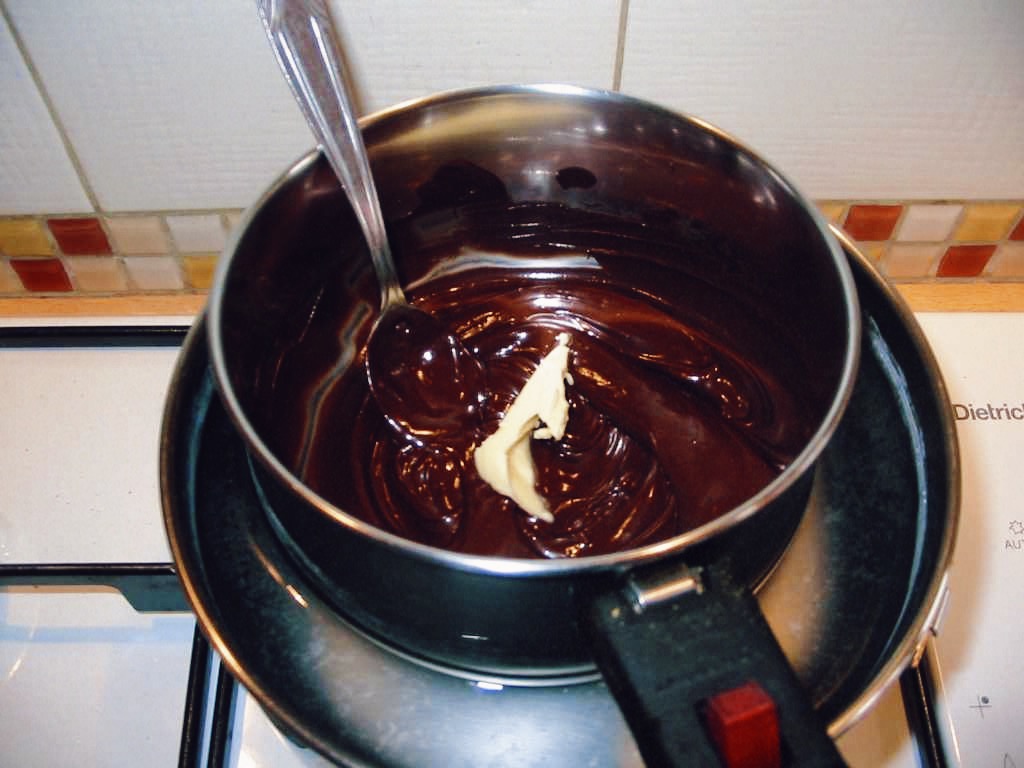
Preparation of Sanguinaccio Dolce
Affogato (Drowned)
One day someone, somewhere in Italy (nobody knows who, where, or when for sure) had a curious itch about what might happen if they drowned a scoop of gelato in steaming espresso. They probably didn’t realize that they’d invented not just a dolci-drink, but an entire cinematic culinary event whose drama varies according to the ratio of gelato to espresso. With a large scoop of gelato, you have a moment to sit back and savor a slower, more peaceful drowning. A small scoop can be more stressful; it’s all over in the blink of an eye. Regardless, there’s something rather cathartic about watching the gelato’s gradual submersion into a sea of espresso. Unless of course, you try the variant at Firenze’s gelateria Vivoli, which inverts tradition by serving the espresso liquid in a snug gelato crater (yes, you’ve seen it a billion times on Instagram by now). But with no certainty as to what is drowning what in this case, can affogato purists still call it an affogato? The jury’s still out.
There are a thousand ways to die. So might as well make it a killer last supper.
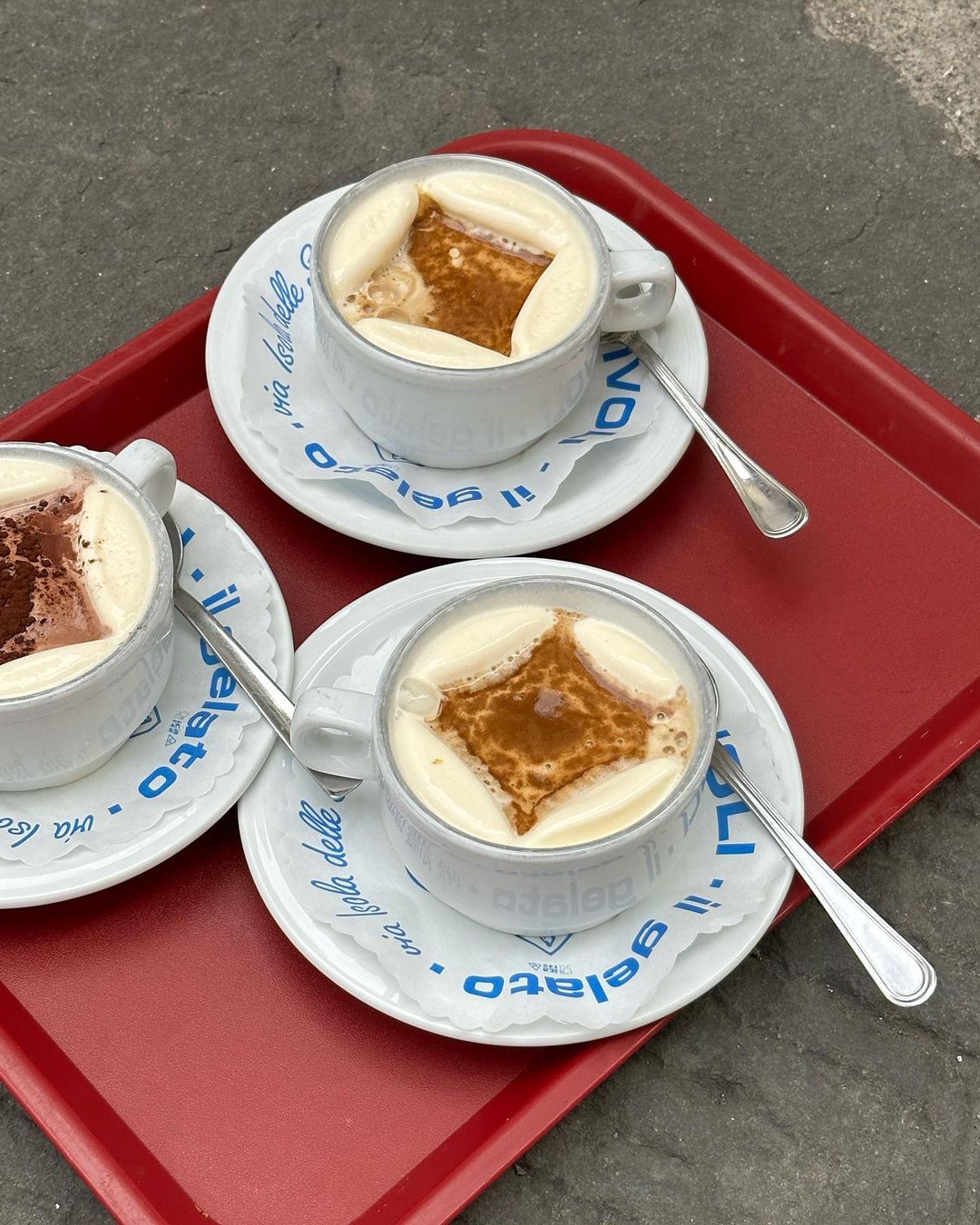
Affogato; Photo by Kirthanaa Naidu

